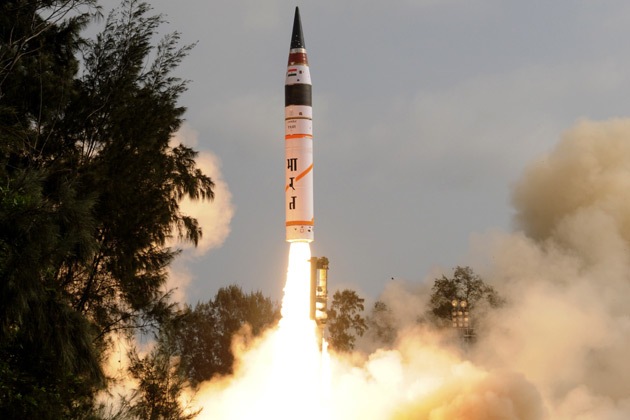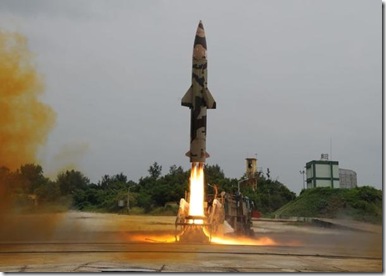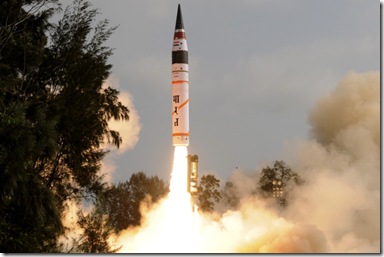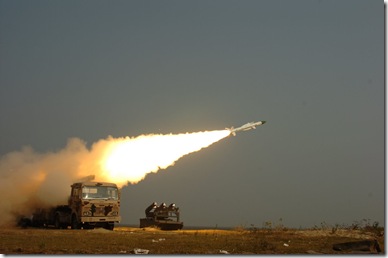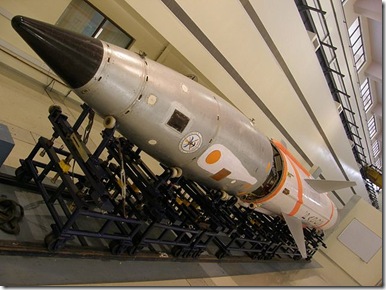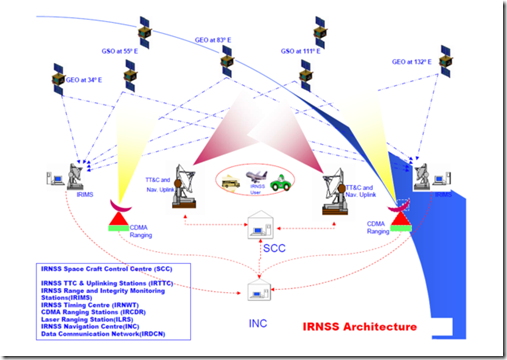Missiles basically have four system components, i.e., targeting and/or guidance, flight system, engine, and warhead. Most of India’s current missiles were developed under Integrated Guided Missile Development Program that had its inception in 1980. Here are 30 Interesting Facts About Indian Missile Program.
1-5
1. Dr. APJ Abdul Kalam conceived and worked on Integrated Guided Missile Development Program.
2. India is the first nuclear weapons country to have a no first use policy.
3. India test fired its first indigenously built missile Prithvi in 1988 (Prithvi II picture above), and the Agni missile in 1989. This caused concerns among the countries that already possessed such technologies (Canada, France, Germany, Italy, Japan, the United Kingdom and the United States) and therefore placed technological restrictions on India. This slowed down the programme, but India successfully developed indigenously all the restricted components denied to it.
4. Prithvi class surface-to-surface short-range ballistic missile has been in service since 1994. Currently Prithvi II is being used by the Indian Army, Airforce and Navy.
5. India’s cruise missile (being tested) NIRBHAYA is a cruise nuclear-warhead missile, which when blasted, takes the form of a plane and when in close proximity to the target it attacks with a random flight trajectory thus eliminating the probability of it getting terminated by any antimissile system because there is no predefined flight path set.
6-10
6. India’s indigenous nuclear-powered ICBM(Inter-Continental Ballistic Missile) AGNI-V (pictured above) puts India into the Elite Club consisting of USA, China, France and Russia. The famous missile series AGNI failed the first 2 times and was made fun of by other countries. It was successful in the third try, but USA claimed that the project head A.P.J. Abdul Kalam (who visited Long Island, USA for some other work) had learnt the technology from their missiles. Now AGNI is one of the best missile systems in the world. India claims AGNI-V to have a reach of 5,000 kms to which Chinese and Australian delegates and experts suspect to have a range of 8,000 kms and that India is hiding these facts just to avoid any concern from foreign countries.
7. AGNI-VI (being built) will have a range of 10000 kms, which would give India the power to strike in any part of the world barring South America and very small parts of North America.
8. One unit of Agni II costs a whopping INR 35,00,00,000.
9. India is emerging as a powerful country capable of possessing a nuclear triad (strategic bombers, intercontinental ballistic missiles, and submarine-launched ballistic missiles).
10. India is one of just three countries along with Russia and China that has this supersonic ramjet powered cruise missile Moskit at its disposal. Powered by four ramjets, this missile typically flies at about 2 m and has an operational range of up to 120 kms. It can cause a lot of damage from large distances.
11-15
11. BrahMos (Brahmaputra+Moskva rivers) is the world’s fastest cruise missile in operation. The missile travels at speeds of Mach 2.8 to 3.0. The land-launched and ship-launched versions are already in service, with the air and submarine-launched versions currently in the testing phase.
12. The missile BrahMos-2 being built under collaboration with Russia (under testing) is the fastest hypersonic missile in the world travelling at a speed of Mach-7 (7 times the speed of sound).
13. Brahmos missile systems are the most accurate and are considered better than the next systems Tomahawk missile systems of USA.
14. India in 2013 became the first country in the world to have a submarine-launched supersonic cruise missile (BrahMos).
15. One unit of BrahMos costs a whopping INR 14,20,00,000.
16-20
16. Sophisticated Akash (pictured above) surface-to-air missile defense system was developed by DRDO and Bharat Electronics Limited for the Integrated Guided Missile Development Program. Since 2009, 3,000 medium-range missiles compatible with this system have been built. While flying at an altitude of 18 kms, these missiles can reach speeds of up to Mach 2.5. The missile is completely guided by the Radar, without any active guidance of its own, which gives it greater capability against jamming.
17. A very promising Trishul missile system developed to protect India’s naval assets was shut down in 2008 due to escalating development costs.
18. Shaurya missile developed by DRDO is a low maintenance canister launched hypersonic surface to surface missile capable of carrying nuclear warhead. It has a range of 750-1900 km and can reach 7.5 mach speeds. Due to compact size, they can remain hidden or camouflagedin underground silos from enemy surveillance or satellites till they are fired.
19. Indian Army has many deployments of a battery of Pinaka Multi Barrel Rocket Launchers consisting of 72 launchers that can all be launched within 44 seconds. They can flatten an area of one square kilometer about 40 km away from the launcher.
20. Astra missile under development by DRDO will have the capability to engage, pursue and destroy fast moving targets beyond visual range in the air.
21-25
21. Prithvi Air Defence missile (pictured above) was developed for high altitude (exo-atmospheric) interception of incoming ballistic missiles and destroy it. It can intercept any incoming missile launched 5000 km away. With its testing in 2007, Indian became the fourth country (after USA, Russia and Israel) to successfully develop an Anti-ballistic missile system. It has a maximum interception altitude of 80 km.
22. Likewise, Ashwin Ballistic Missile Interceptor is an anti-ballistic missile designed to intercept incoming ballistic missiles in the endo-atmosphere at an altitude of 30 km.
23. Barak 8 is being developed under $330 million deal under between India and Israel. It will be developed to defend India’s military assets against any kind of missiles.
24. On 14 February 2013, India and France concluded negotiations on the Short Range Surface to Air Maitri Missile of nearly worth of $6 billion. This is supposed to fill the gap created by failure of Trishul missles. Maitri Missile project is a next-generation quick-reaction Surface-to-Air Missile (QRSAM) with a lethal hundred per cent kill probability. It will be a short-range of 15 km hypersonic surface-to-air point defense missile system.
25. KALI (laser) being developed by DRDO has been a cause of concern for a lot of nations including China. DRDO officials have time and again denied the common belief of it having any military use. Even if Indian Government wants to weaponize KALI laser system, it will take time. But if it comes out as a success, it can be very effective as an airborne defence system and an anti-satellite weapon.
26-30
26. ISRO is developing Indian Regional Navigational Satellite System (indigenous GPS). This will make India less dependent on US and Russian navigation satellites for guiding missiles.
27. A constellation of seven satellites are to be launched under IRNSS program with the first one to be launched in June 2013 and the final one by around 2014.
28. India currently possesses the necessary technology to develop an anti-satellite missile and DRDO officials are contemplating on developing an effective Anti-Satellite missile capable of destroying enemy satellites in wartime.
29. India and Pakistan set up their own nuclear hotline on June 20, 2004 with the help of US Military officers for secured communications to inform the leaders of the other country of their nuclear tests in the region.
30. The responsibility of initiating the process of delivering nuclear weapons and warheads rests with Strategic Forces Command after receiving orders from Nuclear Command Authority. SFC administers all strategic forces by exercising complete command and control over India’s nuclear assets.

















